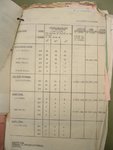wuzak
Captain
As you can see the two projectiles start out at about the same speed but the 50 BMG because of better external ballistics retains it's velocity better and will therefore arrive at the target faster, will have a flatter trajectory and will penetrate better when it hits.
Isn't penetration partly a function of momentum, not velocity? Or is it energy?
Another factor which plays a role in the comparison is the fuse of the 20MM. If the fuse does not work there is no explosion. If the fuse works prematurely the explosion takes place on the surface without penetration. If the fuse works too slowly, for example if the projectile hits a thin part of the wing, the explosion takes place outside in the air.
What use is a round that penetrates if it doesn't hit something vital internally? Like the pilot.

